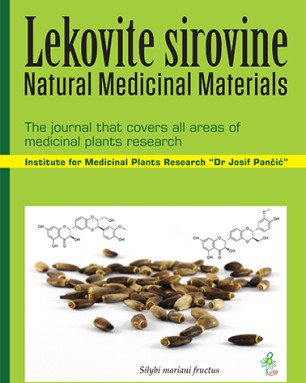Institute for Biological Research “Siniša Stanković”, University of Belgrade , Belgrade , Serbia
Institute for Biological Research “Siniša Stanković”, University of Belgrade , Belgrade , Serbia
Institute for Biological Research “Siniša Stanković”, University of Belgrade , Belgrade , Serbia
Institute for Medicinal Plant Research “Dr. Josif Pančić” , Belgrade , Serbia
Institute for Biological Research “Siniša Stanković”, University of Belgrade , Belgrade , Serbia
This study aimed to investigate the activity of C. oblonga peel and leaf ethanolic extracts on biofilm formation of different microbial strains, including pathogenic bacteria and food poisoning strains. It was shown that both of the investigated extracts inhibited biofilm formation in a dose dependent manner with sub-minimal inhibitory concentrations. The percentage of biofilm formation inhibition varied for each bacterial strain and was in the range of 10-100%, for both of the tested extracts. The ability of extracts to inhibit already formed biofilms presented as minimal concentration necessary to disrupt biofilms and concentrations was in the range of 0.010-0.100 mg/mL for the leaf extract and 0.005-0.075 mg/mL for the peel extract. The investigated extracts showed a promising antimicrobial effect comparable to, or even higher than the used reference compounds which make these plant parts attractive for pharmaceutical and food industry.
This is an open access article distributed under the Creative Commons Attribution License which permits unrestricted use, distribution, and reproduction in any medium, provided the original work is properly cited.

The statements, opinions and data contained in the journal are solely those of the individual authors and contributors and not of the publisher and the editor(s). We stay neutral with regard to jurisdictional claims in published maps and institutional affiliations.